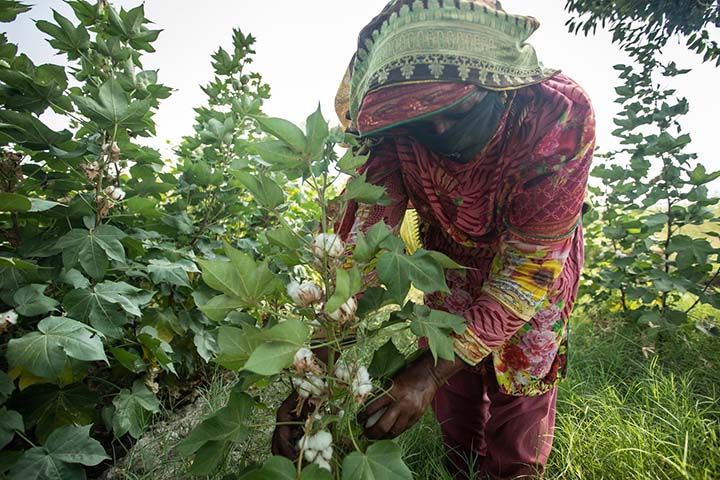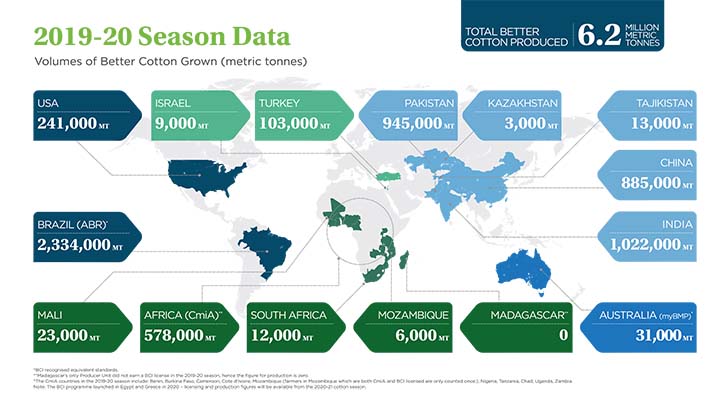Sustainability December 16, 2021
Better Cotton Aims to Reduce Greenhouse Emissions 50% by 2030
The cotton certifier and sustainability initiative recently announced new climate change mitigation targets. Several promo industry suppliers are members of the organization.
Better Cotton, a worldwide cotton certifier and sustainability initiative that has several promo suppliers as members, announced new climate change mitigation targets on Dec. 15. Chief among them was a pledge to reduce overall greenhouse gas emissions per ton of Better Cotton produced by 50% by 2030, from a 2017 baseline.
The sustainability program also plans to announce four additional targets by the end of 2022, covering the areas of soil health, pesticide use, smallholder livelihoods and women’s empowerment, all with impact indicators to track and evaluate metrics against the baseline.

A Better Cotton farm worker picks cotton in her family’s field in Punjab, Pakistan in 2019. (photo courtesy of Better Cotton/Khaula Jamil location)
“This is a pledge for Better Cotton farmers and a stake in the ground for the global cotton sector,” said Alan McClay, CEO of Better Cotton, in a press release. “We know that climate change poses a great risk to cotton farmers – with rising temperatures and more extreme weather events like flooding and unpredictable rains. We will help on the ground by incentivizing farmers to enrich the environment and embrace both climate-smart and regenerative agricultural practices.”
Right now, McClay said, nearly a quarter of the world’s cotton is produced using the Better Cotton Standard, and the organization hopes to at least double that amount by 2030.

(Better Cotton)
Since its formation in 2009, Better Cotton says it’s had a significant impact on the sustainability of the world’s cotton production. During the 2019-20 farming season, for example, Better Cotton farmers in India – the nation with the most farmers licensed to grow Better Cotton – used 10% less water, 13% fewer synthetic fertilizers, 23% fewer pesticides and 7% more organic fertilizer compared to farmers in the same region who aren’t part of the initiative. Earlier this month Better Cotton published its first impact report, sharing field-level data from the 2019-20 cotton season.
“Better Cotton is a unique global platform that strives to do something that has never been done before, and that is to bring some collective continuity to the conversation around ‘cotton,’” said Marc Lewkowitz, president and CEO of Supima, a nonprofit trade association in the U.S. that aims to promote the use of U.S.-grown pima cotton around the world. “With Better Cotton’s new 2030 strategy, there is an ambitious initiative to drive and steward demonstrable continuous improvement that is both responsive to our global challenges as well as supportive of the growers and their communities.”
Better Cotton has nearly 2,100 members. Among them are promo suppliers Threadfast Apparel (asi/91163) and Fruit of the Loom (asi/84257). Shahi, a factory in India that Top 40 supplier SanMar (asi/84863) partners with, is also a Better Cotton member.

Promo for the Planet is your destination for the latest news, biggest trends and best ideas to help build a more sustainable and socially-responsible industry.
